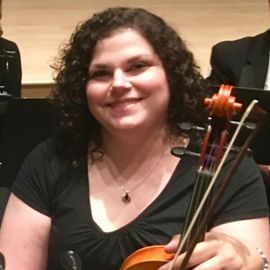
We have had the renovations to our physical diagnosis laboratory space, which is a 10 bay open space for students to learn a technique of examination. Q: How will these new features benefit future and current Salus University students?ĭonna: What is exciting about this is that this more than doubles our clinical lab space. And the patient simulation lab, which got a bit of a delayed start because of those closures we've experienced, should be open probably the end of October, is when we're targeting for that. We're targeting late August for that work. The new and renovated classrooms are scheduled to be done by the end of the summer. Technology, cameras essentially, will be in place in the exam rooms to record the encounters for remote testing and by faculty to review in a learning environment.Ĭurrently, we're just finishing completion of the renovations to the existing lab space. The new space is designed for students to practice their clinical and patient interaction skills in an environment that mimics real world doctor's office. The third part, which is the part that's really exciting, is that we are creating a brand new patient simulation lab. One of those will be a traditional lecture-style class, and the other will be a collaborative classroom, which will have pod-style tables and digital displays around the room for group work and interaction. Second part was to renovate two classrooms on the fourth floor. Basically, we're updating, providing a new ceiling and improving lighting to the existing space. The first of which is minor renovations to the existing skills training lab. The project can basically be broken down into about three parts. We are using those funds for improvements to classrooms and labs. Q: What renovations is the PA program undergoing right now?Īmie: Salus received a matching grant of what was up to $500,000 from the Commonwealth of Pennsylvania and Governor Wolf for improvements to the facilities used by the Physician Assistant Program. I have 20 years experience in practice in internal medicine. I have the privilege of serving as the director of Salus' Physician Assistant Program. I basically help administration plan, design, and construct most of our campus improvements here at Salus.ĭonna: Hi, I'm Donna Agnew. I've been a licensed architect for 20 years, and I've worked for Salus the last three years. In a recent podcast, Salus project manager, Amie Leighton, and PA program director, Donna Agnew, talked to us about the program's exciting new renovations and updates.Īmie: I'm Amie Leighton.


The Salus Physician Assistant Studies Program is based on the university's legacy of excellence in clinical education.
Salus university human anatomy program professional#
The anatomy program promotes the broad intellectual focus required of future graduate students in the anatomical sciences or other health-care professions by providing courses that integrate modern teaching methods with extensive student participation that are designed to improve skills which are critical to their future professional development.The physician assistant profession is one of the fastest growing today.
Salus university human anatomy program full#
The rigorous program allows students to demonstrate their full academic ability for future graduate programs or medical school. Graduates of the program will have developed expertise and experience in human gross anatomy, neuroanatomy, embryology, histology, pathology and laboratory medicine and will be able to apply these skills in a variety of educational and healthcare settings.

The Anatomy concentration, within the Master’s Program in Medical Sciences, has been developed to provide a concentrated program of study that is designed for students interested in either future doctoral or professional programs in the biomedical sciences or healthcare and education professions. Manifestations of health and disease can be regarded as attributes of anatomical structures ranging in size from individual molecules to whole organs. Anatomy has long been considered as the basis of all the biomedical sciences (including clinical medicine).


 0 kommentar(er)
0 kommentar(er)
